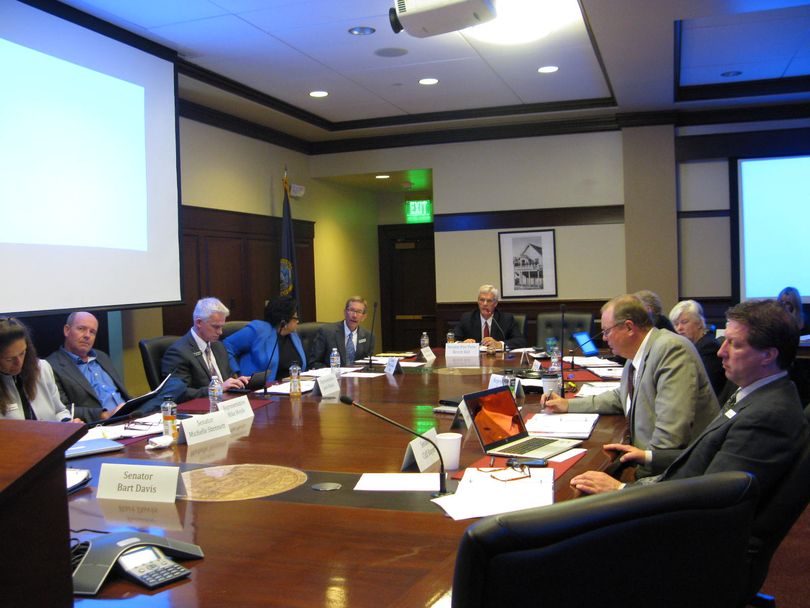Legislative Council hears generally positive budget numbers

The Legislative Council, the bipartisan leadership panel that handles matters between legislative sessions, met today, and among the reports it heard was an update on the state budget. It was generally positive news; although revenue estimates have been adjusted downward slightly since the end of the last legislative session, some costs have come in lower than anticipated, including a multimillion-dollar rescission from the Medicaid program due to lower than anticipated costs. As things stand now, the state general fund is on track toward an $85 million ending balance, or surplus, when fiscal year 2015 ends on July 1, 2015, up from the estimate at the end of the legislative session of $79.4 million.
Looking ahead to next year, based on agency budget requests, Idaho could end the 2016 fiscal year with a $50.7 million surplus, if revenues hit the projected 5.5 percent. “We’re glad to see the economy going the direction it is and at a little faster rate, as we recover from the recession,” said Senate President Pro-Tem Brent Hill, R-Rexburg, who co-chairs the Legislative Council.
He was particularly pleased to hear estimates from legislative budget analyst Paul Headlee that while this year’s public school budget is $44 million below the fiscal year 2009 level in general funds, if current requests are funded, next year’s would finally exceed that ’09 level, by roughly $43 million. That’s based on current state schools Superintendent Tom Luna’s proposed budget for next year, which could be amended by his newly elected successor, Sherri Ybarra. Luna originally proposed a 6.9 percent increase for schools, but that’s been amended down to 6.4 percent because an anticipated PERSI rate increase was cancelled by the state retirement fund’s board, so those anticipated costs have been removed from all state agency budget estimates.
“If we were to follow the recommendations so far, we will have restored all of those cuts plus shown some increases,” Hill said.
The council also heard a report on the potential costs of the pending tiered licensure rule at the state Board of Education. The controversial proposal may well change; it’s been the target of heated criticism at hearings around the state.
But as proposed, the rule has generally been described as costing roughly $220 million a year once it’s phased in, for a new teacher compensation program that would raise teacher pay while tying it to three new performance-based tiers of teacher licensing. Headlee plugged in the costs of benefits and growth, and came up with a new total figure: $304 million a year in ongoing costs at the end of the five-year phase-in. He also calculated the costs of sticking with Idaho’s current teacher compensation system for the next five years, which requires certain increases for years of experience and education; staying with the current system would have an ongoing additional cost of $127 million to the state general fund by that same five-year point.
That means the difference, or “new money,” required to bring on the new tiered system would be $177 million. Hill that analysis may make the concept “more palatable” to legislators.
